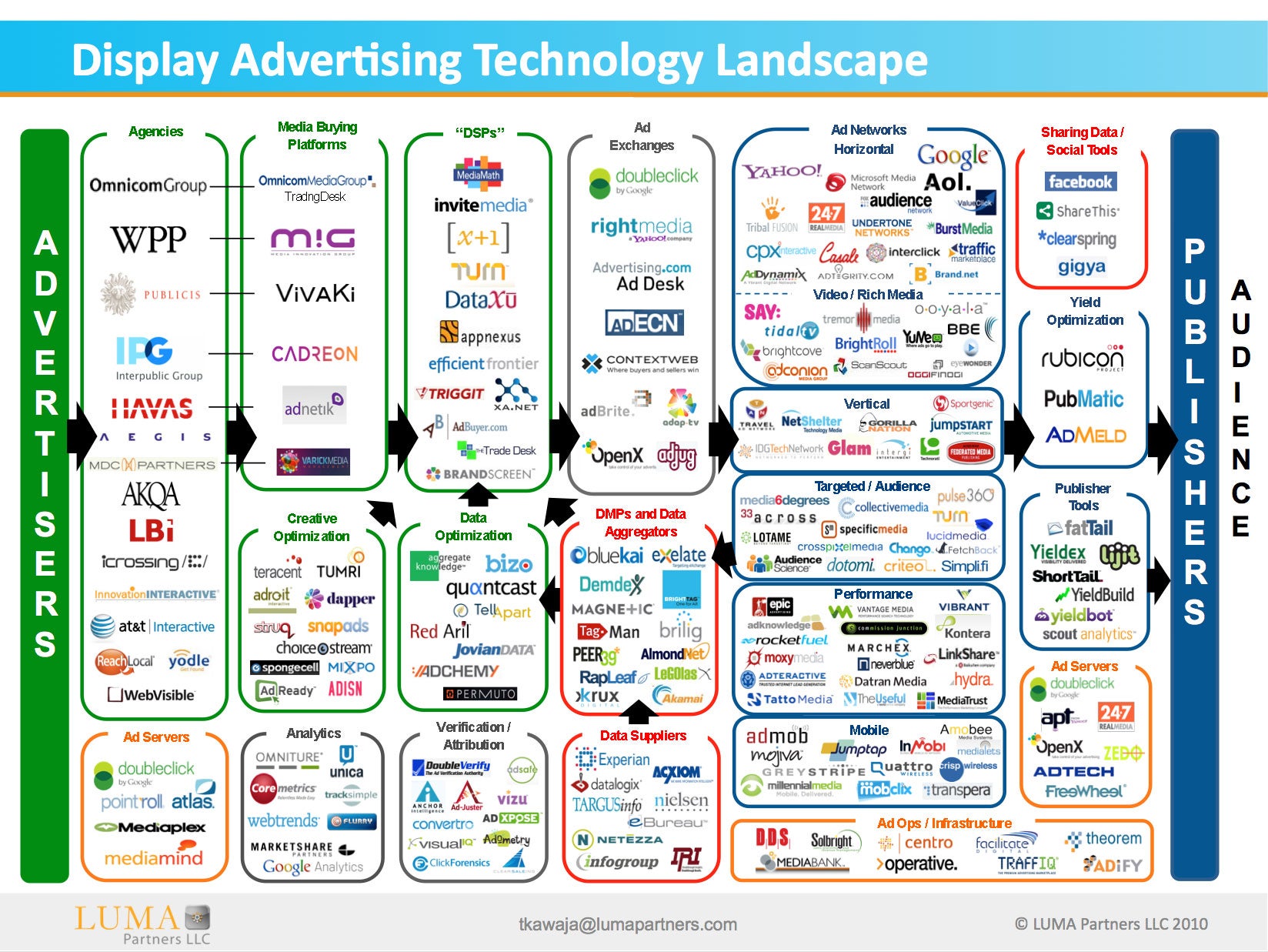In this blog post, we discuss why Microsoft strongly supports self-regulation, how
the final version of IE9 will implement the Do Not Track User Preference as a secondary
method, and why we will continue to provide features well beyond the minimum standards
to keep consumers in control of their safety and privacy.
Industry Complexity and Self-Regulation
Microsoft has worked diligently in the area of online privacy and Web tracking protection
to propose industry solutions and to adopt the proposals of others to further the
ability of industry self-regulation.
We strongly favor industry self-regulation given the complexities of online privacy
and advertising.
The industry diagram, below, shows some of the third parties involved when a consumer
visits a Web site with advertising—including ad agencies, ad networks, ad servers,
data aggregators and suppliers, ad exchanges, demand side platforms, supply side
platforms, verification, and analytics companies:

Helping Protect Consumers from Tracking: Primary and Secondary Methods
Helping protect consumers from tracking and other online privacy issues involves
both technical as well as non-technical methods. We have
submitted to the W3C our technical approach to the problem, Tracking Protection,
and the W3C is preparing a workshop in April to discuss next steps on Web standards
work in this area.
Tracking Protection is the primary technical method in IE9 to help protect users
from tracking. The final release of IE9 will also implement the broadly discussed
Do Not Track User Preference (via both a DOM property and an HTTP header, as described
in the
W3C submission) as a secondary method.
Tracking Protection provides a way for consumers to enforce their privacy choices
by blocking content that can be used for tracking. Tracking Protection helps consumers
(who opt-in) without any regulatory or legislative intervention today. Consumers
can choose Tracking Protection Lists from organizations and individuals they trust.
You can find some examples of Tracking Protection Lists
here. Greater transparency in the online industry – something that regulatory
actions can encourage – can help improve Tracking Protection for consumers; when
Tracking Protection List authors can more easily identify which content on a site
performs tracking that is objectionable to consumers, they can more easily target
that content on behalf of consumers.
Many in the industry have pointed out that the meaning of the Do Not Track User
Preference is ambiguous. For
example, the Wall Street Journal reported:
The Interactive Advertising Bureau, which represents online advertisers, said “there is currently no definition” of what advertisers should do when receiving the do-not-track notification. “It’s like sending a smoke signal in the middle of Manhattan; it might draw a lot of attention, but no one knows how to read the message,” said Mike Zaneis, senior vice president of the organization.
These two methods are complementary. As the meaning of the user preference becomes
less ambiguous, and government works through what process and funds will be necessary
to make enforcement and verification work, we will continue to work with a broad
set of industry partners to bring both these proposals to completion as high-quality
Web standards through the W3C process. As more and divergent proposals emerge, an
established, working forum for consensus, like the W3C, becomes even more important.
It is important to note that while tracking and advertising and profiling overlap,
they are not the same. A consensus definition of tracking is an important outcome
of the broader industry and government discussion. Nothing about Tracking Protection
or the broadly discussed Do Not Track User Preference is specific to ads or ad content.
Minimum Standards & Innovation
We believe that there is always room to do more than the minimum, and that a Do
Not Track User Preference alone will not be sufficient for many consumers worldwide
today.
We will continue to differentiate Internet Explorer by making available high levels
of online privacy protection that consumers can control and take advantage of as
they see fit.
—Dean Hachamovitch, Corporate Vice President, Internet Explorer